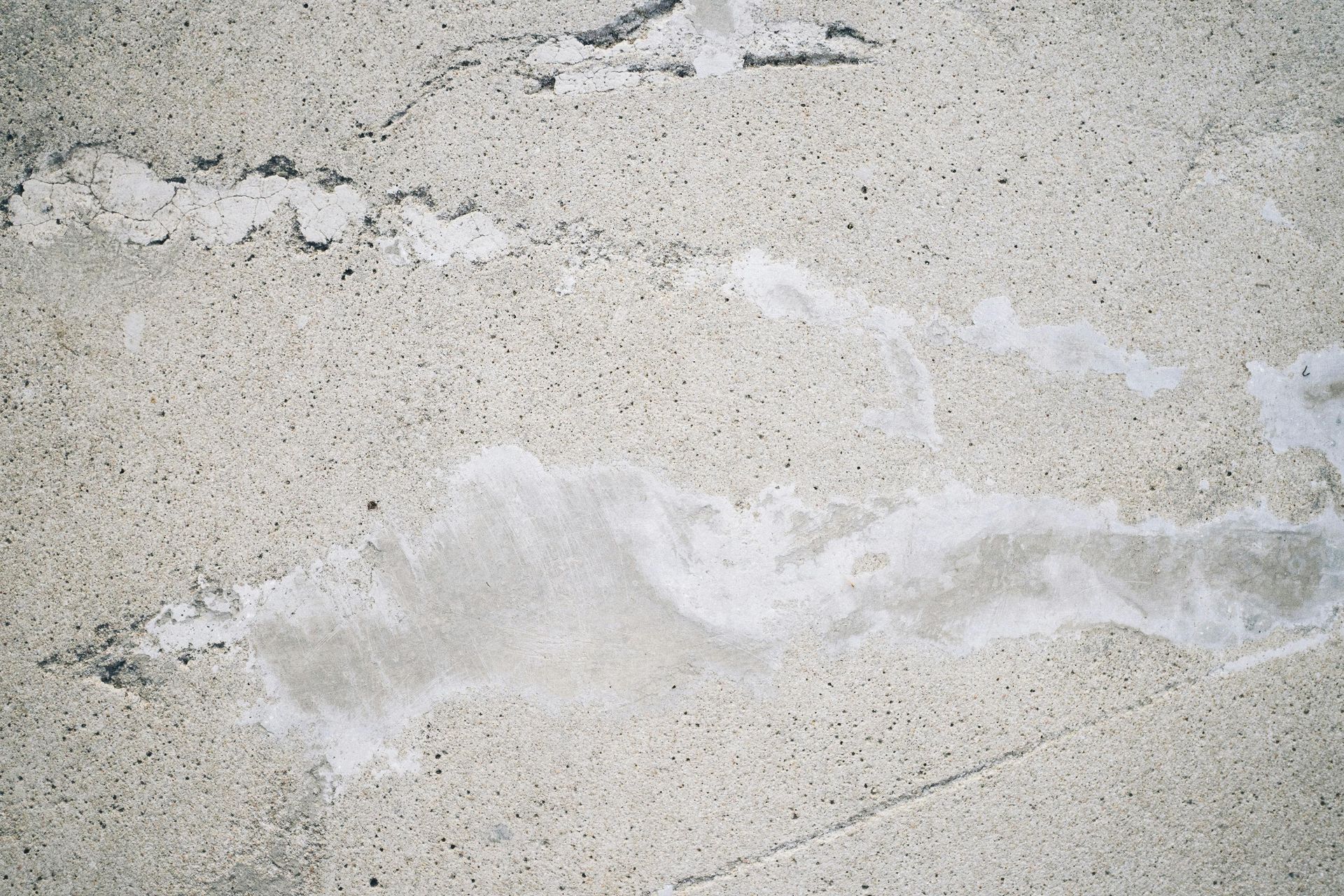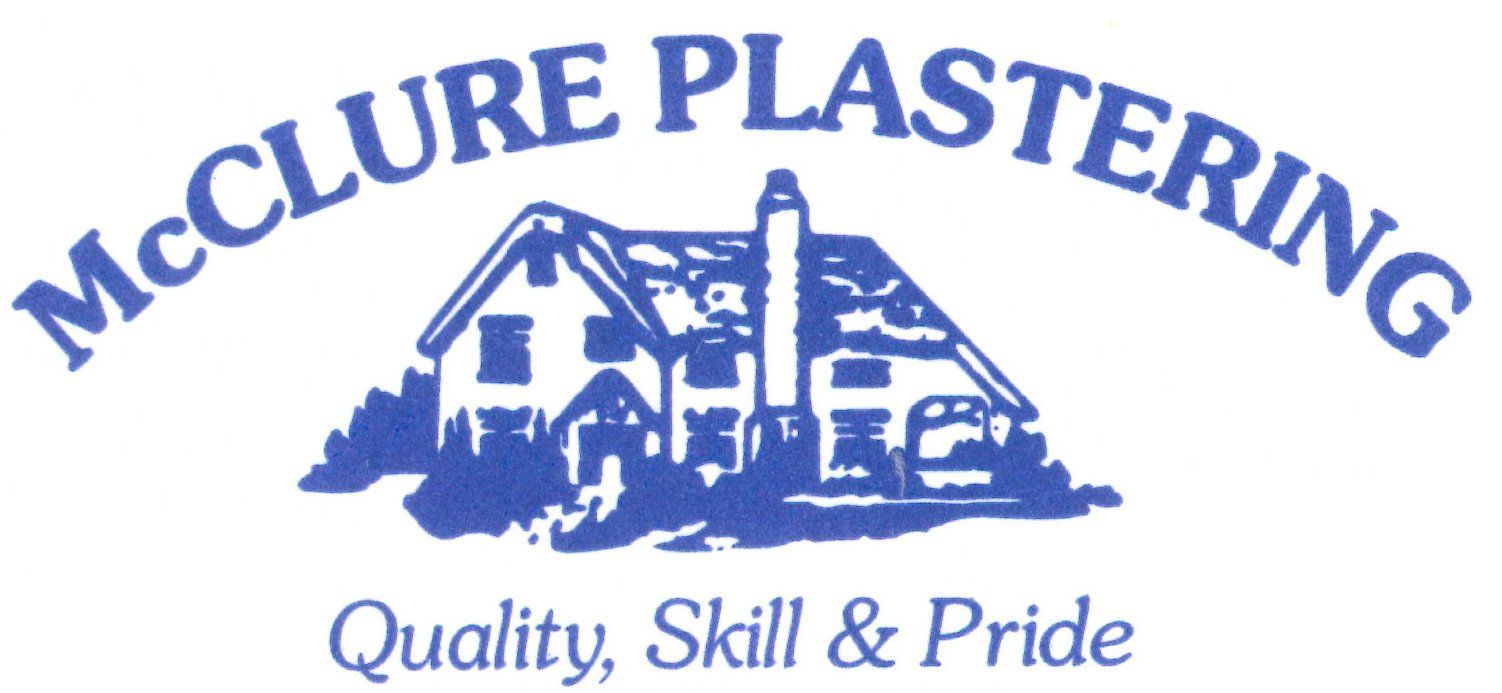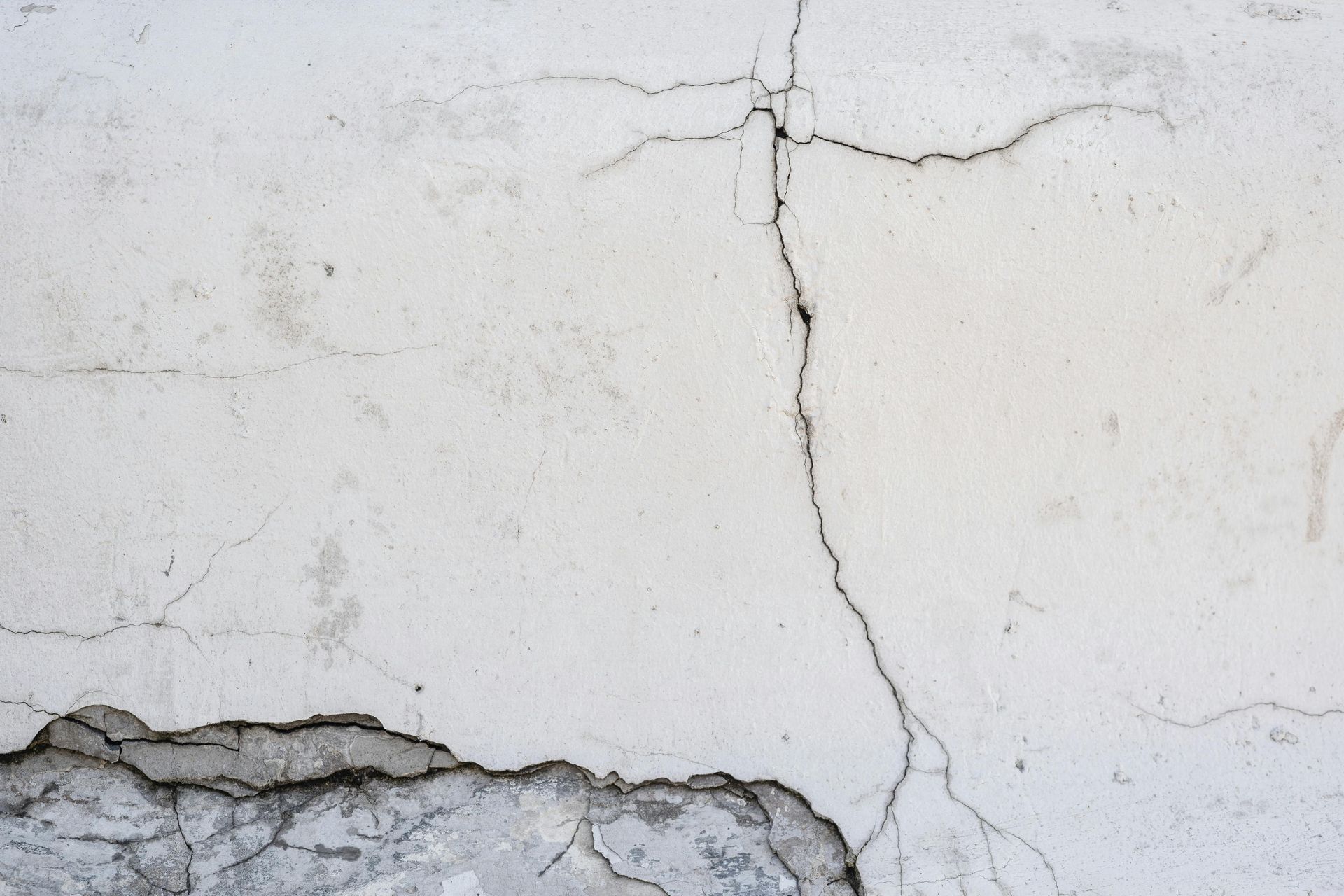Stucco, a popular exterior finish for homes and buildings, offers durability and aesthetic appeal. However, it may develop cracks over time, compromising its integrity and appearance.
This article will cover four different kinds of stucco cracks, their likely causes, and how to address them so you can maintain the beauty and functionality of your property for years to come.
Hairline Cracks
Hairline cracks are thin and typically less than 1/16 inch wide. They often result from the natural settling of a building or slight shifts in the foundation. While hairline cracks may seem minor, they can worsen over time if left unattended, allowing water infiltration and leading to more significant damage.
To address hairline cracks, clean the area around the crack with a stiff brush to remove any loose debris or dirt. Then, apply a high-quality acrylic caulk or stucco patching compound into the crack, ensuring it fills. Smooth the surface with a putty knife, and once dry, paint over it to match the existing stucco finish.
Spiderweb Cracks
Spiderweb cracks, also known as craze cracks, resemble a network of fine lines spreading across the stucco surface. These cracks often occur due to improper mixing of the stucco materials, excessive application thickness, or rapid drying during hot weather. While spiderweb cracks are cosmetic, they can indicate underlying issues with the stucco application.
To address spiderweb cracks, start by widening the cracks slightly using a putty knife or similar tool. This step helps ensure better adhesion of the repair material. Next, fill the cracks with a flexible stucco patching compound, pressing it firmly into the crevices. Smooth the surface with a damp sponge or brush, and allow it to dry completely before painting over the repaired area.
Step Cracks
Step cracks resemble a staircase pattern and are typically found near corners, windows, or doors. They often indicate structural movement or settlement issues within the building, which can compromise the stability of the stucco surface. Ignoring step cracks can lead to more severe damage and costly repairs down the line.
To address step cracks, it's crucial to identify and address the underlying cause of the structural movement. Consultation with a structural engineer may be necessary to assess the extent of the damage and recommend appropriate solutions. Once the underlying issues are resolved, repair the cracked stucco by widening the cracks, filling them with a bonding agent, and applying multiple layers of stucco patching compound until the surface is smooth and uniform.
Expansion Joint Cracks
Expansion joint cracks occur at joints or seams where different materials or sections of stucco meet. These cracks typically result from temperature changes, moisture fluctuations, or the natural expansion and contraction of building materials over time. While expansion joint cracks are common and serve a functional purpose in allowing for movement, they can still detract from the appearance of your stucco finish if not properly maintained.
To address expansion joint cracks, clean the area around the crack to remove any debris or loose stucco. Next, apply a flexible sealant designed for stucco expansion joints, ensuring it fills the gap and adheres to both sides of the joint. Smooth the sealant with a putty knife or similar tool, and allow it to cure according to the manufacturer's instructions. Regular inspection and reapplication of sealant may be necessary to prevent further cracking and maintain the integrity of the joints.
For professional stucco repair and restoration services, contact McClure Plaster & Paint, Inc. We specialize in preserving the beauty and integrity of your stucco surfaces. Contact us for a free estimate.



